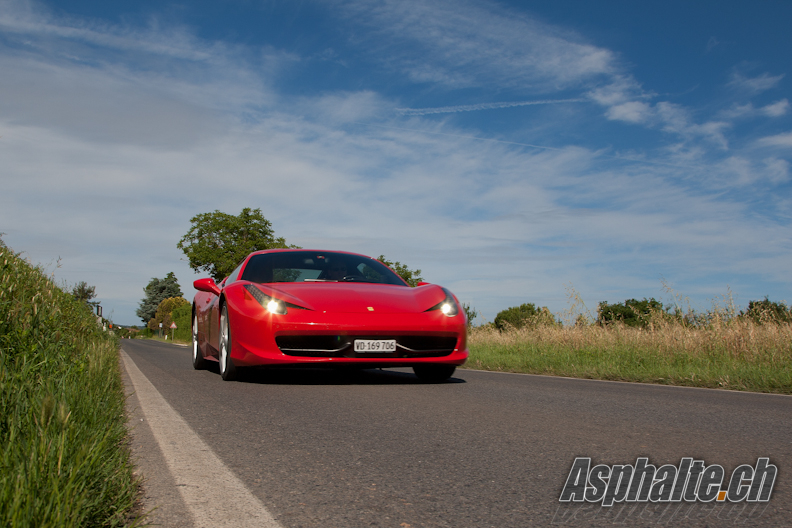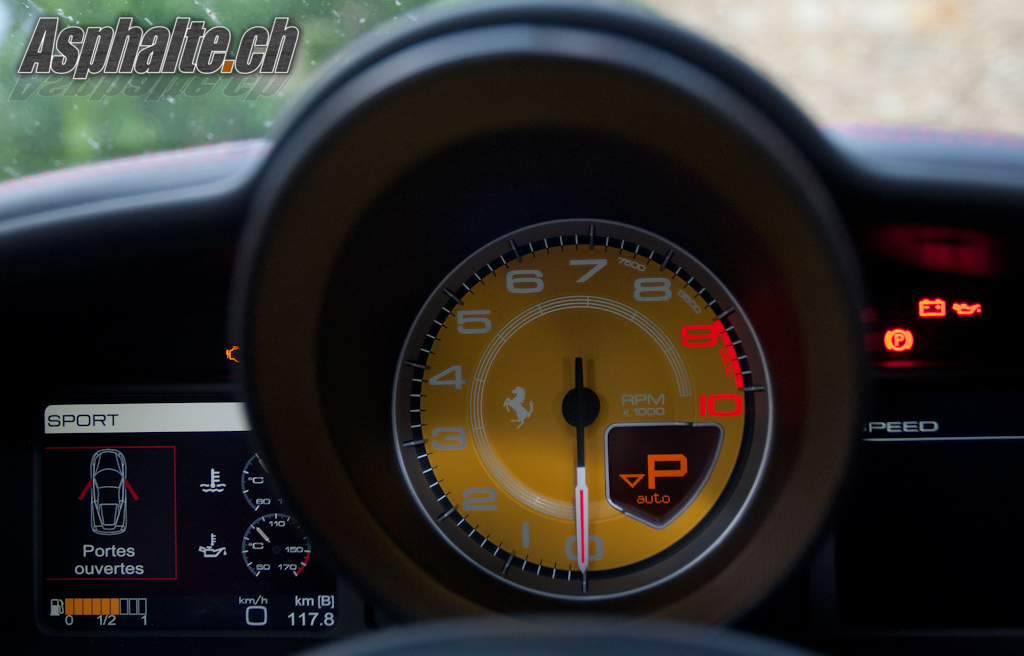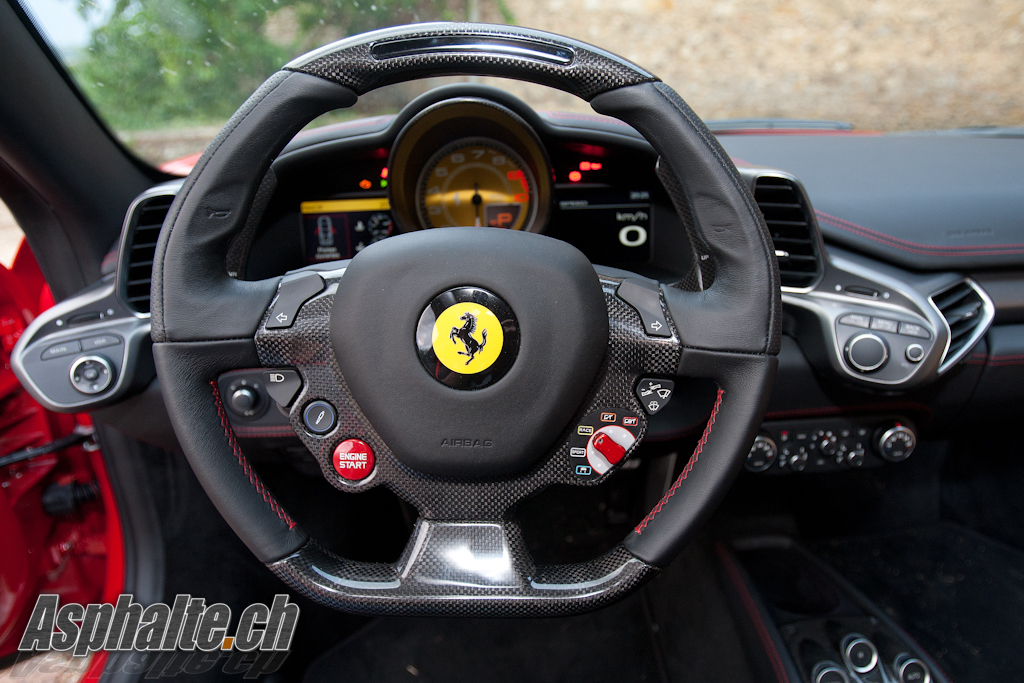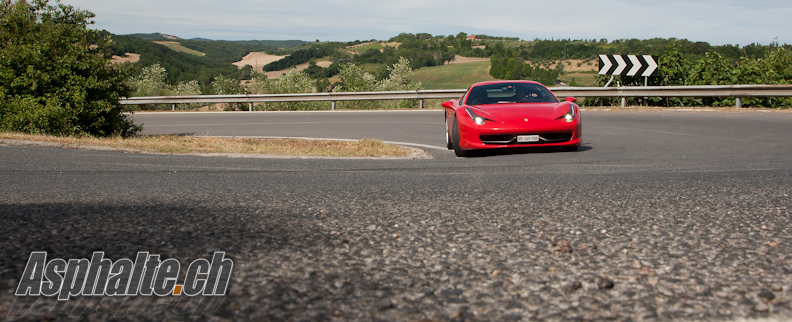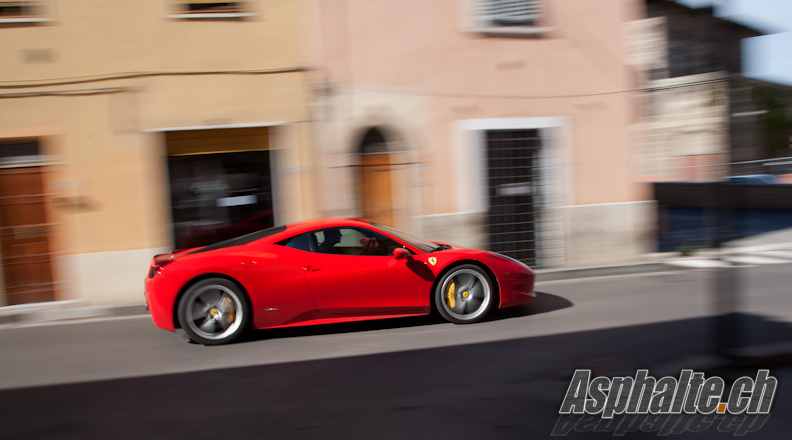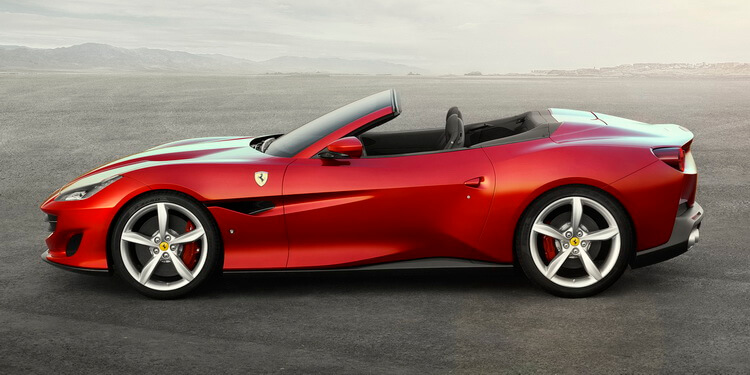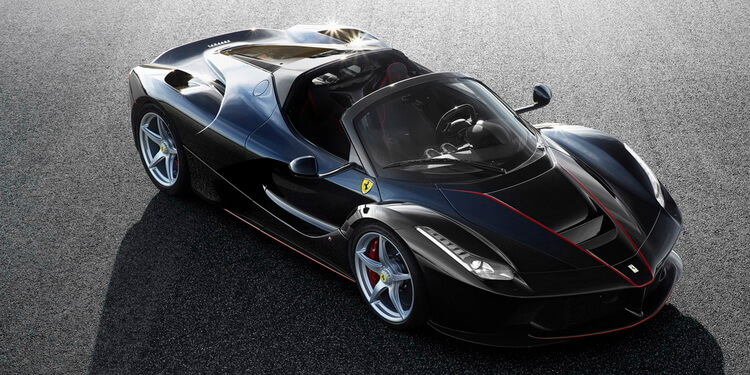Road Test Ferrari 458 Italia: heavy artillery
The bumpy road damping mode requested by Michael Schumacher proves to be a real plus on any tarmac that isn’t perfectly smooth. It helps to preserve the 458’s composure, preserving the car’s stability and absorbing the most unsettling bumps. There is a small price to pay in body control on faster sweepers, but it is otherwise well worth it. The car defaults back to the standard harder mode anytime the manettino is actuated, decoupling the two functions would make more sense to us. The Sport mode turns out to be a comfy Grand Turismo setting, with a quiet exhaust and smooth shifts. Overall comfort turns out to be excellent over longer trips. In Race mode, the combined action of the F1-Trac traction control and E-Diff3 differential delivers a bizarre mix of early drifts and abrupt cut-offs to bring the car back inline.
Deactivating F1-Trac altogether by setting the manettino in CT Off mode turned out to be a much better choice, giving more progressive traction and feedback at the limit while the differential extracts maximum grip from the agonizing Bridgestones. The 458 strikes then a perfect chord: supreme acceleration through seamless upshifts, sharp breaking while downshifting in glorious burble, crystal clear turn in, progressive feeding of the throttle at the edge of grip before full throttle. Small car, huge performance.
Handling is even more remarkable when factoring in the weight of the car. The official dry weight were already a hint, the new 458 Italia is measurably heavier than its predecessor. We weighted our test car at 1598kg (3523 lbs with 43/57 front-rear split) with a full tank of gas, forged wheels and nobody or nothing on board, that is a full 124kg (273 lbs) heavier than the F430 we last measured with sport seats and ceramic brakes, and another 50kg (110lbs) heavier than the 430 Scuderia we tested. As for the reasons for such mass, they are difficult to find, as Ferrari isn’t saying much about the design of the 458 shell. Outer dimensions have not changed much, the only obvious difference being the double clutch gearbox.
| 458* | 430 Scuderia | F430** | 360 | |
| Length [mm] | 4527 | 4512 | 4512 | 4477 |
| Width [mm] | 1937 | 1923 | 1923 | 1922 |
| Height [mm] | 1213 | 1199 | 1214 | 1214 |
| Wheelbase [mm] | 2650 | 2600 | 2600 | 2600 |
| Weight [kg] | 1598 | 1421 | 1474 | (1390) |
| Power/Weight [kg/hp] | 2.80 | 2.78 | 3.01 | 3.48 |
*Forged 20in rims, standard seats
** model 2009, carbon ceramic discs, carbon bucket seats
This is a concerning trend, quite contradictory with the strategic weight saving objectives gathered around the 2007 Millechili (one thousand kilograms) concept. With a real power-to-weight ratio of 2.8kg/ch, the 458 brings no improvement over the 430 Scuderia, even if still has the advantage of shorter gear ratios and higher torque (540 vs 470 Nm). On open roads, the 458 never felt heavy, but the weight difference might bring a heavier toll on the track. And then there’s the McLaren MP4-12C and it’s stated objective of 1300kg …
The Ferrari 458 Italia is no small achievement, being at the same time more versatile and more savage than the 430 Scuderia. A monument of a drive train, modern design inside and out, an exhaust note to die for, this Ferrari, as imperfect as it is, is a mesmerizing car, a perfect symbol for the country it bears the name of.

